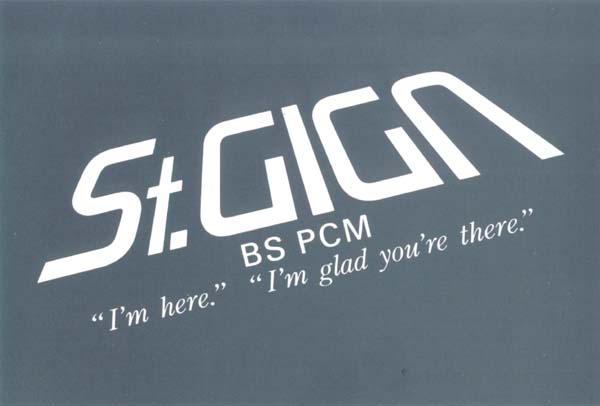When I was in Japan in 1991, I heard abut ST.GIGA, the satellite radio station. It was a very innovative idea. I remember thinking that their slogan was a nice greeting. Presumably it’s the satellite speaking… :-)

St.GIGA is credited as being the world’s first digital satellite radio station. The Satellaview has received praise for being ahead of its time, particularly for St.GIGA’s method of distributing and broadcasting high-quality audio and recordings.
In accordance with Yokoi’s conception, St.GIGA’s broadcasts initially followed no externally fixed (or artificial) timetable. Rather, they were based upon the cyclical motif of a 24-hour “tide table”[4] where broadcast themes were approximately matched to the current tidal cycle according to the rule of twelfths throughout the 24-hour broadcasting period. Under this innovative schedule, the station broadcast a variety of primarily ambient music programs including Music Tide (音楽潮流, Ongaku Chōryū), various jazz programs, and Tide Table (featuring live sound-broadcasts of the ocean shore). The beginnings and ends of programs were not clearly demarcated and instead utilized the unprecedented “Tide of Sound” (音の潮流, Oto no Chōryū) method where songs of one genre would gradually flow into and intersperse with the songs from the prior genre until the new genre became predominant.
“Tide of Sounds” broadcasts operated under a principle of “No Commercials, No DJs, No News Broadcasts, No Talk.” Unlike most commercial-driven radio broadcasts, this was made possible for St.GIGA due to its reliance on a subscription Digital Audio Broadcasting service. In order to receive this DAB service, the subscriber was required to obtain a special decoder, to pay an initiation fee, and subsequent monthly fees. “Tide of Sounds” broadcasts often took the form of high-quality digital recordings of nature sounds accompanied by spoken word narration by an actor as the “Voice”. Throughout the life span of “Tide of Sounds” broadcasts, the part of the “Voice” would be played by a number of notable Japanese poets, including, among others, Ryo Michiko. “Voice” performances often consisted of all new poetry composed specifically for the show.
The Internet Archive has many hours of St. GIGA’s broadcasted program “Tide of Sound” (音の潮流). (LINK)
Enjoy!



This was wonderful!